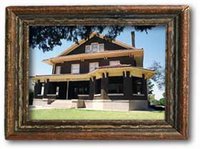Phoenicians to vote on $878.5 million bond program; over $28.5 million slated for historic preservation
 Long-time Phoenicians know that the City has been holding bond elections since 1957. And over the course of 49 years, city leaders have perfected the art of developing and selling bond packages to Phoenix voters. Unlike other U.S. cities which rely on more top-down approaches for crafting bond proposals, Phoenix uses a community-driven process to earmark worthy bond initiatives. It is not surprising then that many of our favorite urban amenities were borne from past bond elections. These include the ultra-modern Burton Barr Central Library, the flashy renovated Symphony Hall, and the cool Phoenix Art Museum. Also popular with voters have been neighborhood and historic preservation initiatives -- such as those to purchase and restore Tovrea Castle, support neighborhood revitalization, and support historic building and low income housing rehabilitation work.
Long-time Phoenicians know that the City has been holding bond elections since 1957. And over the course of 49 years, city leaders have perfected the art of developing and selling bond packages to Phoenix voters. Unlike other U.S. cities which rely on more top-down approaches for crafting bond proposals, Phoenix uses a community-driven process to earmark worthy bond initiatives. It is not surprising then that many of our favorite urban amenities were borne from past bond elections. These include the ultra-modern Burton Barr Central Library, the flashy renovated Symphony Hall, and the cool Phoenix Art Museum. Also popular with voters have been neighborhood and historic preservation initiatives -- such as those to purchase and restore Tovrea Castle, support neighborhood revitalization, and support historic building and low income housing rehabilitation work.As has been done in past years, more than 700 Phoenix residents helped to identify items for the community's 2006 bond program. Now set at $878.5 million, this bond package will use money generated by the current property tax rate to repay bonds. When you vote by early ballot or Election Day (March 14, 2006), you will find seven propositions on the ballot, loosely falling under the headings of public safety; technology; education; parks and recreation; libraries, community and cultural centers; housing and neighborhoods; and public infrastructure. The actual seven ballot items, with somewhat abbreviated titles, are:
- Strengthening Police, Fire, and Homeland Security
- Using Technology to Improve Police and Fire, Governmental Efficiency...and Access to Voting
- Building Small High Schools, Higher Education, and Health Science Facilities
- Increasing Recreational Opportunities with New Parks and Open Spaces
- Serving our Community with Libraries and Youth, Senior, and Cultural Centers
- Providing Housing that is Affordable...and Revitalizing Neighborhoods
- Constructing Streets and Storm Sewers...Infrastructure
It’s the position of the Phoenix Historic Neighborhoods Coalition, Phoenix Museum of History, Arizona Preservation Foundation, Arizona Humanities Council, Arizona Action for the Arts, and National Trust for Historic Preservation (among many other organizations) that Phoenix voters should vote “yes” on all seven ballot propositions. And for die-hard historic preservation aficionados, it’s essential to vote for “Preservation Picks 3-4-5-6!”




